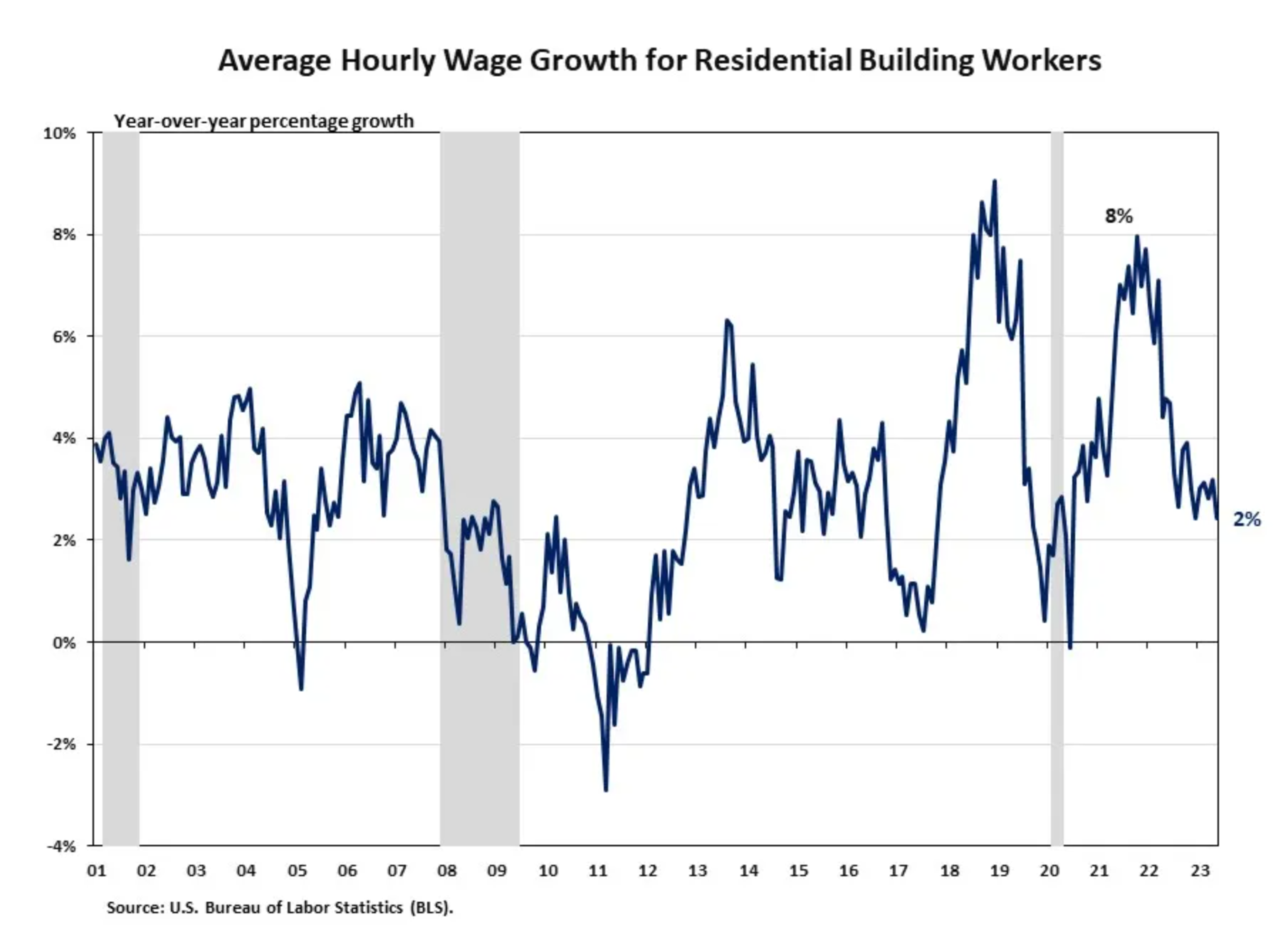Charts: Residential Labor Wage Growth Slows
Originally Published by: NAHB — July 14, 2023
SBCA appreciates your input; please email us if you have any comments or corrections to this article.
Average hourly earnings for residential building workers* rose at a slower pace in May, after more than a year of strong gains. Wage growth has retreated below or close to 3%, from the peak rate of 2021.
According to the Bureau of Labor Statistics (BLS) report, average hourly earnings (AHE) for residential building workers were $29.87 in May 2023, increasing 2% from $29.16 a year ago. This was 14.3% higher than the manufacturing’s average hourly earnings of $26.14, 8.3% higher than transportation and warehousing’s, and 12.9% lower than mining and logging’s. Average hourly earnings for residential building workers grew at a relatively slower pace in the first five months of 2023, compared to the previous two years. The year-over-year growth rate reached 8% in October 2021, the highest rate since February 2019, but this rate is now decelerating. Indeed, the construction labor market with a peak in 2022 is now entering a stop-start cooling stage as the housing market adjusts to higher interest rates.
Note: * Data used in this blog relate to production and nonsupervisory workers in the residential building industry. This group accounts for approximately two-thirds of the total employment on residential building industry.

